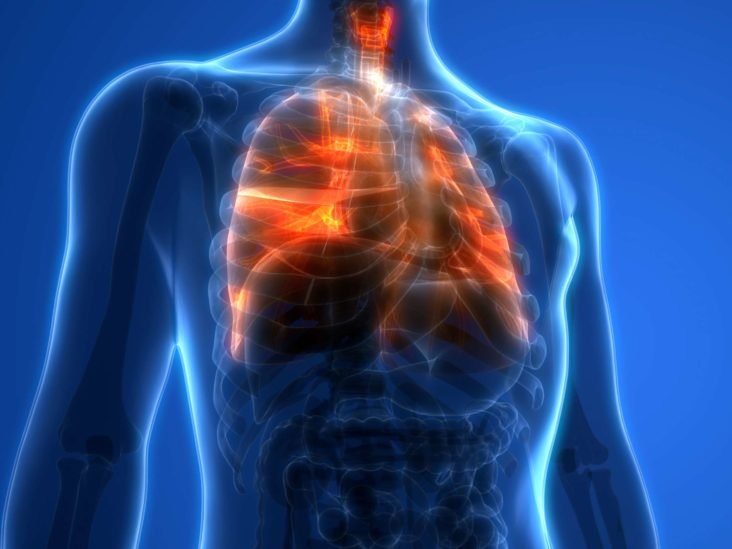Through respiration we exchange gases with our environment. Our cells require a continuous supply of oxygen (O2 ) in order to obtain energy from food molecules. Cells would also die if they were not able to get rid of the carbon dioxide (CO2 ) they produce.
The primary organs of the respiratory system are the lungs, which carry out this exchange of gases as we breathe. This mechanism of breathing allows oxygen to be inhaled and carbon dioxide to be exhaled. The respiratory system uses the technique of exchanging of gases as a means of getting oxygen to the blood.
The 3 Processes of Gas Exchange are:
- In our lungs, O2 passes from the air into our blood, and CO2 passes from our blood into the air.
- Our circulatory system transports O2 and CO2 to and from all the parts of our body. Haemoglobin molecules in our red blood cells transport O2.
- Cells take up O2 and release CO2

The lungs
The lungs are sacs made of pleural membranes, containing a dense lattice of tubes: bronchi, and bronchioles. When we inhail air, the oxygen travels down the trachea into the lungs through the bronchi, which further divide into bronchioles tubes that finally become tiny microscopic air sacs called alveoli. When the air reaches the alveoli, the oxygen is separated from the air and is absorbed into the blood. At the same time, carbon dioxide (a waste product) in the blood travels into the alveoli, after which it is exhaled.
There are approximately 300 million alveoli. In average, a person breathes 25,000 times a day.

